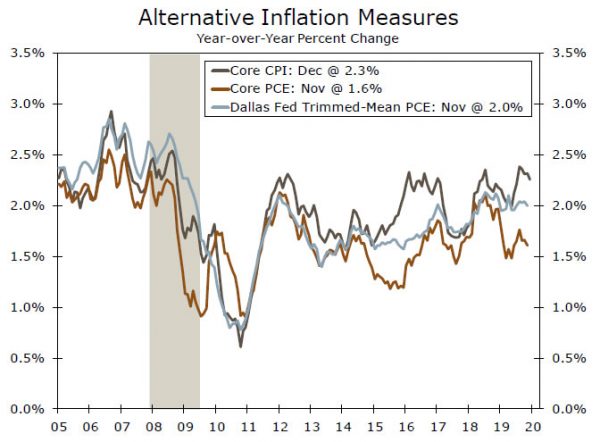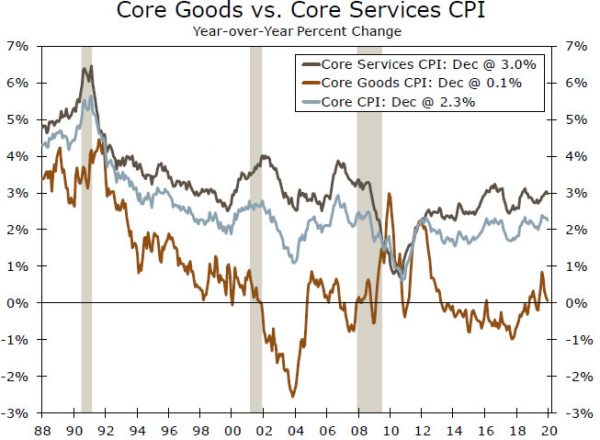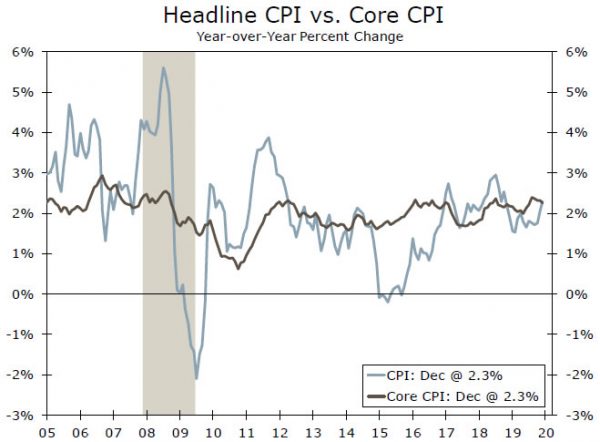Consumer prices rose 0.2% in December, pushing the year-ago rate up to 2.3%. Excluding food and energy, however, the trend in inflation is little changed and suggests no need for the Fed to alter its course on policy.
Consumer Price Inflation Remains Tame
The inflation picture looks little changed in light of December’s CPI data. Consumer prices rose 0.2% in the final month of the year, bringing the yearago rate up to 2.3%, but there were few signs that the underlying trend in inflation is strengthening.
As expected, higher gasoline prices over the month gave the headline a boost. Meanwhile, a modest pickup in food prices stemmed largely from larger price hikes for food services, with food away from home prices up 3.1% over the past year versus a 0.7% increase at grocery stores.
Stripping out food and energy, prices are also up 2.3% over the past year— on par with the rate registered in October and November. On a monthly basis, however, core inflation cooled a touch with an increase of 0.11%. Even as tariffs on the last tranche of goods from China were avoided in December, tariffs on roughly two-thirds of consumer goods imports from China remain in place. The impact to goods inflation, however, not only remains minimal, but is also fading. Price changes for the goods categories that most closely correspond to items subject to tariffs added only 0.02 point to the 12-month change in prices in December, down from nearly 0.1 point as recently as this summer.
Services continue to underpin core inflation. Shelter costs eased up in December, but much of the softness came from a 1.8% decline in the volatile lodging away from home category. In the similarly volatile services category of airfare, prices fell 1.6%—the largest drop in two and a half years. Primary housing costs posted another soft gain. Given the tight rental market and modest pickup in home price appreciation, however, we do not expect shelter inflation to weaken materially. At the same time, medical care services costs have been trending higher, rising another 0.4% in December.
Nothing to Alter the Fed’s Policy Stance
On net, the CPI shows that the trend in inflation remains steady. While the Fed’s preferred measure of core inflation, the core PCE deflator, has fallen back in recent months, more telling of the underlying trend is the Dallas Fed’s Trimmed Mean, which strips out the most extreme price changes among items in a given month rather than solely removing food and energy. It remains right at the Fed’s target at 2.0% and, along with core CPI, suggests that while inflation may not be taking off it is not capitulating either.
As a result, there does not appear to be a need for the Fed to add additional accommodation at this time for the sake of boosting inflation. But with wage growth softening recently and Fed officials hinting at a desire for the core PCE deflator to overshoot for a period, taking back last year’s insurance cuts remains a distant prospect.















